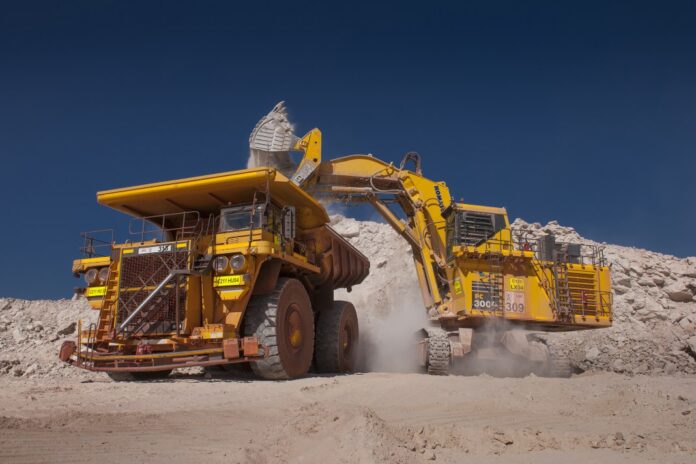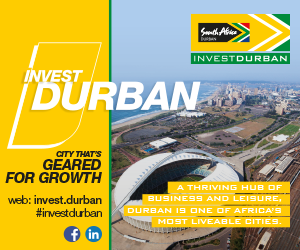The board of Anglo American rejected several offers made by BHP to buy the company during 2024. The bid would have excluded Anglo’s two big South African assets, Kumba Iron Ore, pictured, and Anglo American Platinum (Amplats).
Anglo American is selling.
In November 2023 Anglo’s shares came under pressure from the market when the company announced reduced copper targets and major cost-saving measures which included job cuts. Anglo has a long-term strategy to be more focused and consequently is in the process of selling assets and shareholdings in diamonds, coal, nickel and platinum. The portfolio transformation will result in the focus being on copper, premium iron ore and crop nutrients.
Platinum producers have all been under pressure, with Northam Platinum postponing some projects and Sibanye Stillwater laying off staff due to lower global prices. By contrast, the two older staples of South African mining, gold and coal, are making a comeback.
A sale that was first mooted in 2021 was finally resolved in June 2023 when Northam Platinum agreed to sell its stake in Royal Bafokeng Platinum (RBPlat) to Impala Platinum (Implats).
That sale took Implats’ holding in RBPlat to 91% after it had bought 9.26% of the company from Public Investment Corporation (PIC) earlier in the year to give it a majority holding. The RBPlat platinum group metals (PGM) facility, which lies directly south of Sun City, is adjacent to Implats Rustenburg’s land. The Impala Rustenburg operation comprises a nine-shaft mining complex and concentrating and smelting plants. The big sale coincided with a decline in the global prices of some of the PGMs such as palladium and rhodium. Although the long-term prospects for PGMs are good in support of the nascent hydrogen economy, a slowing Chinese economy and the expanded market for electric vehicles are negative factors.
Gold and coal
Gold is popular again as the global price hit record levels because of war and instability in so many parts of the world. In November 2024, Sibanye Stillwater reported a 292% increase in adjusted earnings from its South African gold operations while Gold Fields reported normalised earnings of $900-million in 2023, up from $860-million the year before.
Sibanye Stillwater’s diversification strategy included moving into platinum and this has paid off, despite the current commodity price. While Anglo is doing the opposite in selling many of its assets, it is mirroring one aspect of the Sibanye masterplan by investing in lithium batteries. Sibanye has built up its share in a lithium mine and refinery in Finland to the extent that it now holds 80% of the facility, with the state-owned Finnish Minerals Group (FMG) owning the balance. In 2024, Anglo American signed an agreement with FMG
The world’s deepest mine will be made even deeper.
The Financial Mail’s cover story in March 2024 was about gold’s resurgence and how “local miners are reinventing their business operations to stay in the game”. One example was the R7.9-billion devoted by Harmony Gold to extending the Mponeng mine in Gauteng, which means that the world’s deepest mine will be made even deeper. Harmony bought Mponeng from AngloGold Ashanti. The article further noted plans to list Blyvoor Gold in New York and increased production forecasts from Pan African Resources.
Coal’s resurgence is closely linked to a global rethink about the speed of the transition to cleaner fuels. In South Africa, that means that four coal-burning power plants, Camden, Grootvlei, Hendrina and Kriel, will now only be decommissioned in 2030. The commitment to switch power sources has not changed, but the timeframe has. Coal will continue to be mined for some time to come.

Afrimat, previously listed on the JSE in the “Construction and Building Materials” section, has changed its classification to “General Mining”, a recognition of the company’s ambitious buying programme in the Northern Cape and Mpumalanga. With construction and building now contributing just 20% to operating profit, Afrimat is active in anthracite and iron ore and will further expand into phosphates, rare earth elements and vermiculite. Among its new acquisitions, Afrimat now controls the Nkomati Anthracite mine in Mpumalanga. The mine, which is in the south-eastern corner of the province, has proven resources of 8.7-million tons and upwards of 400 jobs were created over the last two years. Local communities have a 16.1% stake in the relaunched mine and the Mpumalanga Economic Growth Agency (MEGA) holds 34%.
In July 2023, as scheduled, De Beers Group celebrated the beginning of production at its Venetia Mine in the northern part of Limpopo Province. The long-term, $2.3-billion conversion project of the diamond mine to an underground mine began in 2012 and will extend the life of the mine to 2045 or beyond.
In the Northern Cape, the Namakwa Special Economic Zone in Aggeneys is being envisioned as an industrial cluster with the biggest new mine project in the country, the Gamsberg project of Vedanta Zinc International, as the central tenant. The project will 600 000 tons of zinc when phase three is complete.
Copper is one of the most important elements needed to power the renewable energy transformation and so it’s no surprise that areas mined historically for that mineral in the Northern Cape are now back in the news. Batteries need copper, as do systems used to transmit energy from solar or wind sources. Electric vehicles contain an average of 85kg. Copper 360 and Orion Minerals are actively pursuing old sites and new.
Further online resources:
- Council for Geoscience: www.geoscience.org.za
- Minerals Council South Africa: www.mineralscouncil.org.za
- Department of Mineral Resources & Energy: https://www.dmre.gov.za/









